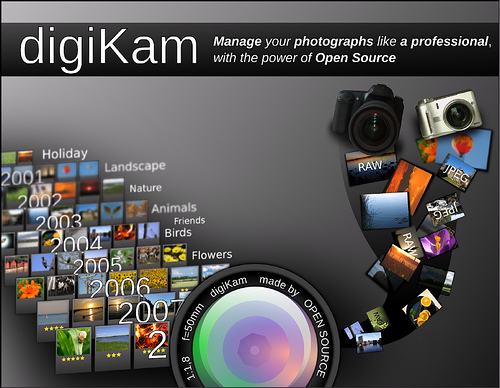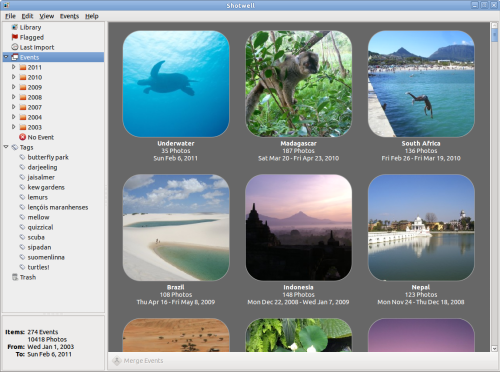Abstract
Have you ever thought about creating your own web site. We are going to explore how to create and maintain a web site.
In this first installment we will talk about some choices and methods of maintaining a web site.
Why a Web Page
Question you would probably like to ask.
Why would I want a web page?
Isn’t it hard to setup a local web server?
I don’t know how to code, how can I create web pages?
What would I put on a web page?
Answers
Why would I want a web page? The answer could be anything from looking information on my computer’s commands, to displaying my kid’s pictures. A personal web page is like a filing cabinet for your computer. It can include links to the weather, to your favorite news site, to a daily cartoon, etc. A single web page, even on you own computer can be a easy way to find things of interest. If your computer is connected to the internet, your web page becomes a quick way to save information of interest.
Isn’t it hard to setup a local web server? Actually no it is not. Most web servers come preconfigured to display a web page with no additional configuration. Lets see what would happen if we just install the Apache web server and went to the default web page. Not too exciting, but still something with no work. Now we can add things to this site to continue.
I don’t know how to code, how can I create web pages? The answer o this it follow a tutorial. Basic html is fairly easy. But the best way to find out is to try a tutorial yourself. I recommand you have a look at Writing Html for teachers.
What would I put on a web page? The short answer is anything you want. But a local web page is most useful if it is a link to things that interest you. May be you look up the weather often, or how about a new web site.
Adding new Features
So you decided to take the challenge and you now have a web site on you compuer. Where do you go from here.
This is not meant to be an exhausing list but just some ideas on how to enhanse your local web page.
Add a Photo Album
Most of us have digital pictures these days, whether from our phone, or a camera. Why not use a photo editing program which can publish your pictures to a web page.

DigiKam
digiKam is an advanced digital photo management application for Linux, Windows, and Mac-OSX.
The people who inspired digiKam’s design are the photographers like you who want to view, manage, edit, enhance, organize, tag, and share photographs under Linux systems.
You can take a look into the digiKam Overview page to take a tour or the Features page to see more advanced information about.

Shotwell
Shotwell is a digital photo organizer that runs on Linux. It is the default photo manager in Ubuntu and Fedora.
Shotwell 0.12 is here! Major new features include:
Straighten photo feature
Support for GTK+3
Flickr login now uses OAuth authentication
Greater support for Android devices
Saved searches can exclude all photos tagged with a given string
Lots of bug fixes!
The Shotwell user guide explains how to use Shotwell. Our wiki has more information about Shotwell for both users and developers.
— Shotwell

Picasa
In this guide, you’ll learn how to use Picasa to organize and edit your photos and videos. Then you’ll learn how to use Picasa Web Albums to upload and share your photos and videos.
Unfortunately Google no longer supports Picasa on Linux. You can download version 3 for Linux using the command wget http://dl.google.com/linux/deb/pool/non-free/p/picasa/picasa_3.0-current_i386.deb. Once you download this file you can install it using sudo dpkg picasa_3.0-current_i386.deb Or if you want to use the latest version 3.9 of Picasa, you can download the file with the command wget http://dl.google.com/picasa/picasa39-setup.exe and then install it using wine, using the command wine picasa39-setup.exe. Of course you need to install wine first.

Referrences
Some time in my web travels I come across a document or sometimes a whole web site what is so full of good information I want to make a local copy. Some websites even encourage you to grab a copy of some document or other. Whether the information is a talk, like this one, or a reference work, or a tutorial, you want your very own copy.
Saving a Web page
So how can you capture a web page if you want to save it. Most web browsers allow you to save a web page directory. The browser saves the main page, and the other links in a separate folder while fixing the links.
Simply put the saved page and the sub folder in your document root location. Then add a link on your page.
Saving a Reference
If the web site provides a download link you are often presented with an archive file. Usually either a zip file or a tar.gz file. Linux can unpack either of these archive files.
Again, you unarchive the file in your document root location and add a link on your top page. This is how I created the Writing Html link above.
Keeping Notes
One task I find my self doing for these talks is capturing ideas from web searches. Since I use Asciidoc, which we discussed last meeting, see Text Processing and the Web, I am able to easily create a web page of links to information. Here is a sample of one reference link.
http://www.methods.co.nz/asciidoc/userguide.html[Asciidoc User Guide]
AsciiDoc is a text document format for writing notes, documentation,
articles, books, ebooks, slideshows, web pages, blogs and UNIX man
pages. AsciiDoc files can be translated to many formats including
HTML, PDF, EPUB, man page. AsciiDoc is highly configurable: both the
AsciiDoc source file syntax and the backend output markups (which can
be almost any type of SGML/XML markup) can be customized and extended
by the user.When this page is processed by Asciidoc it turns into a link followed by the quote above. By simply creating a file and adding notes to it I have a quick log of what I found on the internet.
Organization
One issue you should think about is how are you going to organize your web site. Even though it is on your computer, it can easily grow into a disorganized collection of web pages. What I find works best is to create folders of topics and then put the files in these folders. This allows you to keep your web pages better orgnaized.
Opening my Web to the World
You decided that your web site is truly worth sharing with the world. So how do you go about making that happen. Here are the steps I use.
Pick a Hosting Service
Even though you could host your own website, don’t. It is not easy to set up and will probably get you into trouble with your internet provider. Instead pick a hosting service. I use 1and1, since they offer a low cost package.
Pick a Name
Pick a name you like. Then to to a website like Go Daddy Domain Search and see if your name is available. Once you pick the name, you can go to 1and1 to register the name and open your site.
Create your work locally
Before you go off and start creating your web site, create it locally. It is much easier to create web pages locally and fix them to your tastes. Once you are happy with how they look you can use ftp to upload your site to the hosting service. By hosting it on your own computer first it allows you to try out ideas until you are happy before uploading them to the world.
Only one word of caution everything you upload is remembered forever. Even if you delete something the next day, it probably still exists somewhere on the web. Do not take my word for it, have a look at The Way Back Machine for history of web sites.
Written by John F. Moore
Last Revised: Tue 01 Sep 2020 08:10:06 PM EDT

This work is licensed under a Creative Commons Attribution-NonCommercial-ShareAlike 3.0 Unported License.
